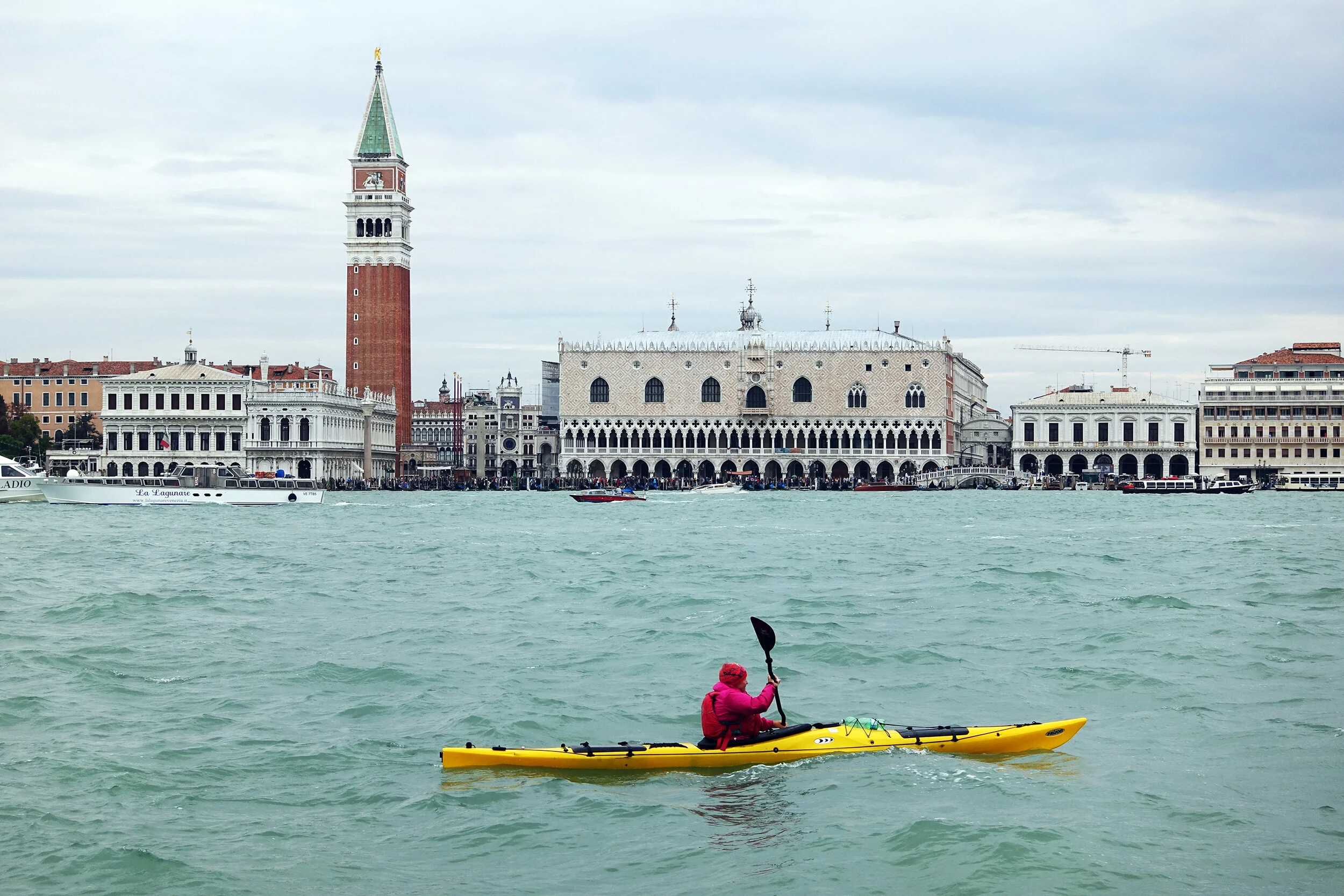
Page 9 of 10
Venice, Italy
So kick out the jams, kick up the soul, pour another glass of that rock and roll
If you already guessed that after Vicenza, Verona, and the Veneto that you would be looking at pictures from Venice, then you either looked at a map, really like the letter V or cheated and skipped ahead on flickr. But even if you already knew that pictures from Venice were coming up, chances are that you weren't expecting a giant head in a a Palladian church.
The Venice pictures start with the Venice Art Biennale, an art show taking place every other year that has been a tradition since (technically) the 19th Century. The title of the 2015 Biennale was "All the World's Futures," and even though it wasn't especially well reviewed (art biennales rarely are), there were some exceptional pieces among all of the clutter. My favorite was from Jaume Plensa, the artist who brought you the giant video head spitting Crown Fountain in Chicago's Millennium Park. Here, in the Church of San Giorgio Maggiore (designed by Andrea Palladio himself), Plensa placed a giant ghost head right in the nave, a face to stare right at and then to stare right on through.
Keeping with the theme of giant heads (it's a pretty good theme after all), we find ourselves in the Russian Pavilion and in an ineffectual stare down with someone in a mask, the highlight of a pretty creepy installation by Irina Nakhova.
The biennale was everywhere, there were installations scattered throughout the eternally sinking city, although if you actually bought a ticket, you would find yourself in two specific areas. The Arsenale consisted of several large brick buildings with multiple smaller installations by country, while the Giardini had individual buildings for each country that were inhabited by larger installations. Armed with a map, a camera and an inextinguishable hope that the next pavilion would be better than the last, I visited them all. Sometimes my hope was justified. Sometimes.
Of all of the pavilions at Giardini (and there are a lot of them), the most visually impressive and far and away my personal favorite installation (sorry Russia) was the Japanese Pavilion and the wondrous "The Key in the Hand" by Chiharu Shiota. There is nothing here not to like. The entire (small) building was filled with a site specific installation made up primarily of a hell of a lot of red yarn and lots and lots of keys. Occasionally something like a boat would get caught up in the red yarn storm, but the real joy was just seeing all of that simple complexity spread out in every imaginable direction. Impressive in photos but more impressive in person.
Some of the pavilion installations were better than others. My rule has always been that if I go to a contemporary art museum and like more than a third of the work, then I have just been to a damn good contemporary art museum. Such a seemingly low threshold is nothing personal, it's just the nature of contemporary art and experimentation. I'm not sure if the 2015 Venice Art Biennale beat my totally arbitrary threshold or not (it probably didn't), but sometimes even in failure there is much to admire. Take for example the Swiss Pavilion by Pamela Rosenkranz. Right away when you see something with a nineteen word convoluted title it's a bad sign, usually it's compensating for something lacking in the work. And you end up with something like this. A room flooded with a mystery liquid that is supposed to represent the aggregate skin tone of white europeans, and with a smell that could be described as similar to a lot of skin lotion but could better be described as just plain horrible. Despite the smell and despite the pointless concept, what saved this putrid lake of liquid skin were the reflections of the light fixtures, something which may have been unintentional but were in the end the one thing that made a visit to the Swiss Pavilion worthwhile.
There was a lot of art at the Biennale and it was hard to see all of it or, more likely, to see most of it. The art was in pavilion after pavilion as well as (sometimes) in locations scattered about the city. And the real danger of seeing so much art at one time is getting numbed by it and starting to find yourself unable to really separate the bad from the ok to the good to the great.
The last of the slideshow pictures from the (now closed) 2015 Venice Art Biennale is something that you can probably see again in 2017. Or 2019. Or 2021. This is the main cafe at Giardini, where the hope of great art is always just around the corner and possibly even at the very next pavilion.

